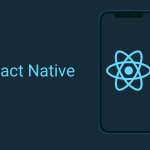In this blog, we will explore how to create a React Native app from scratch, understand its benefits, and learn the tools and steps required to make your first app successful.
React Native has become one of the most powerful frameworks for developing mobile apps efficiently and cost-effectively. Created by Meta (formerly Facebook), React Native allows developers to build apps for both Android and iOS using a single JavaScript codebase.
What is React Native?
React Native is an open-source framework that lets you build mobile applications using JavaScript and React. Instead of compiling to web components, it renders to native platform UI elements, giving your app a real native look and feel. This means you can develop a high-performance mobile app for Android and iOS using just one codebase.
React Native bridges the gap between web and mobile app development, making it easier for web developers to transition into mobile development. You can explore more about React Native at React Native’s Official Documentation.
Why Choose React Native App Development
There are several reasons why React Native has become a top choice among developers and businesses:
- Cross-Platform Development: Write once, run anywhere. The same codebase works for both Android and iOS platforms, reducing time and cost.
- Hot Reloading: Changes in code appear instantly on the app during development, allowing for faster debugging and testing.
- Performance: React Native uses native components and APIs, delivering performance close to native apps.
- Large Community Support: Thousands of developers contribute to React Native, offering plugins, libraries, and ready-made solutions.
- Integration with Native Code: You can combine React Native with Swift, Java, or Objective-C for complex features.
Step 1: Set Up the Development Environment
To begin develop React Native App, you need to install a few essential tools.
Install Node.js and npm:
React Native relies on Node.js and its package manager npm for dependency management. You can download them from Node.js official website.
Install Expo CLI or React Native CLI:
There are two ways to create a React Native project. Expo is beginner-friendly, while React Native CLI provides more flexibility.
- To install Expo CLI, run:
npm install -g expo-cli - To install React Native CLI, run:
npm install -g react-native-cli
Install Android Studio or Xcode:
For Android development, install Android Studio. For iOS, you’ll need Xcode (macOS only). These tools include device emulators to test your app.
Step 2: Create Your First React Native App
If you’re using Expo, open your terminal and run:
expo init MyFirstApp
cd MyFirstApp
npm start
This command will start the development server and open your react native app in the Expo Go app on your mobile device or emulator.rea
If you’re using React Native CLI, you can create your app with:
npx react-native init MyFirstApp
cd MyFirstApp
npx react-native start
This will generate a project folder with all the files you need to start development.
Step 3: Understand the Project Structure
A typical React Native App project includes files like:
- App.js: The main entry point of your app where you define components and layout.
- package.json: Lists your dependencies and scripts.
- android/ and ios/ folders: Contain platform-specific native code.
Step 4: Create Your First Component
React Native apps are built using components. Components can be functional or class-based. Here’s a simple example:
import React from 'react';
import { View, Text, StyleSheet } from 'react-native';
const App = () => {
return (
<View style={styles.container}>
<Text style={styles.text}>Hello, React Native!</Text>
</View>
);
};
const styles = StyleSheet.create({
container: {
flex: 1,
justifyContent: 'center',
alignItems: 'center'
},
text: {
fontSize: 24,
color: 'blue'
}
});
export default App;
When you run the react native app, you’ll see “Hello, React Native!” displayed in the center of your screen.
Step 5: Styling Your React Native App
React Native uses JavaScript objects for styling instead of CSS. Styles are similar to CSS but written as objects using the StyleSheet API. You can also use frameworks like NativeBase or React Native Paper to speed up your UI development.
Check out design best practices on React Native Styling Guide.
Step 6: Debugging and Testing
React Native offers built-in debugging tools. You can open the Developer Menu by shaking your device or pressing Ctrl + M (Android) or Cmd + D (iOS). For testing, use tools like Jest for unit testing and Detox for end-to-end testing.
You can find testing resources on React Native Testing Docs.
Step 7: Build and Deploy Your App
Once your app is complete, you can build it for production.
For Android:
cd android
./gradlew assembleRelease
For iOS:
Open the project in Xcode, select your target device, and click Build.
If you’re using Expo, simply run:
expo build:android
expo build:ios
Then, you can upload your app to the Google Play Store or Apple App Store following their publishing guidelines.
Step 8: Maintain and Improve Your App
After launching your app, monitor user feedback, crashes, and performance metrics. Tools like Firebase Analytics, Sentry, and Flipper help track user behavior and performance issues. Regularly update your app with new features, UI improvements, and bug fixes to keep users engaged.
Conclusion
Developing a React Native app is a rewarding experience that combines the flexibility of JavaScript with the power of native performance. Whether you’re building a startup app, an e-commerce solution, or a simple utility tool, React Native provides all the tools you need to bring your ideas to life faster.
Also Check Ubuntu – Greatness of Open Source for Everyone – 2025






